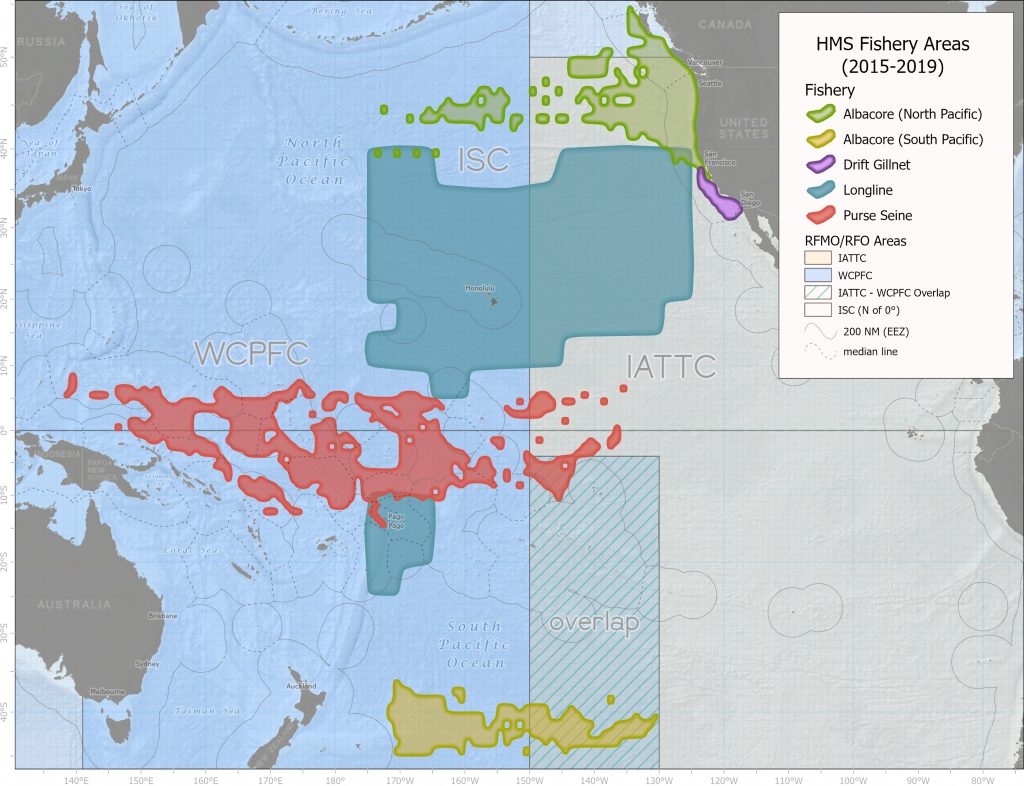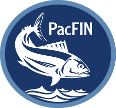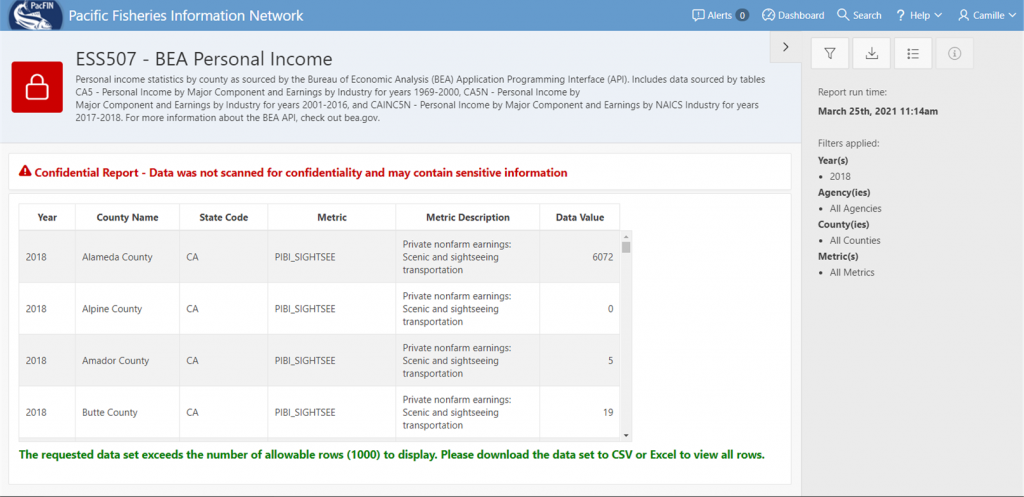Starting 12/27/2021 at 5:30 pm the AKFIN, PacFIN and RecFIN databases will be unavailable due to software upgrades. Service is expected to return by 12/20/2021 at 5 pm. The upgrades will also take the Answers and APEX reporting systems offline.
Tonight (10/4/2021) between 6:30 pm and 7:30 pm the AKFIN, PacFIN and RecFIN databases and reports will be unavailable due to server maintenance.
Maintenance on the AKFIN, PacFIN and RecFIN servers has been completed. Please contact staff if you experience any issues.
The AKFIN, PacFIN and RecFIN databases will be unavailable from 6:30 pm until 7:30 pm PDT on Tuesday 4/20/2021 for system maintenance.
Americans’ Financial Health Through the Eyes of the U.S Bureau of Economic Analysis
Camille Kohler
The Bureau of Economic Analysis (BEA) mission is to “promote a better understanding of the U.S. economy by providing the most timely, relevant, and accurate economic accounts data in an objective and cost-effective manner”. Users of the AKFIN and PacFIN databases can now access these rich data sources, compiled by BEA economists, to analyze income and employment statistics to include wage, salary, employment, and compensation by year and county. Four series are updated annually.
Personal Income Summarized
A summary of income received by people from wages, salaries, dividends, and such aggregated by year and county to include:
- Population
- Per capita personal income
- Personal income
Personal Income by Major Component and Industry
Income received by people from wages, salaries, dividends, and such reported by year, county, and industry to include a hierarchical breakdown of:
- Total wages, salaries, and employer contributions
- Earnings and proprietor’s income for farm, non-farm, and private non-farm
- Private, non-farm earnings by industry like wholesale, retail, and services
- Government and government enterprise earnings for local, state, and federal civilian
Total Full-time and Part-time Employment by Industry
Employment statistics reported by year, county, and industry to include a hierarchical breakdown of:
- Total employment
- Employment by component like proprietors, farm, and non-farm
- Private, non-farm employment by industry like forestry, fishing, and related
- Government and government enterprise employment for local, state, and federal civilian
Compensation of Employees by Industry
Compensation statistics reported by year, county, and industry to include a hierarchical breakdown of:
- Total compensation with breakdown by wages and salaries, supplements, and employer contributions
- Compensation by component like proprietors, farm, and non-farm
- Private, non-farm compensation by industry like forestry, fishing, and related
- Government and government enterprise compensation for local, state, and federal civilian
The PacFIN program downloads these sources via the BEA Application Programming Interface (API) and executes a series of processes that stage, consolidate, and standardize the data. It’s delivered through a series of views in both the AKFIN and PacFIN databases that combine like tables to provide a time series for 1969 through 2018 (the latest data available through the API). Throughout this time, the industries have shifted somewhat so PacFIN also provides a value-added field that standardizes these shifting industry variables across the varying versions of the API tables.
In addition to the database views, a series of APEX reports was recently deployed to the PacFIN APEX reporting system to support online filter and download of the BEA data to .csv or Excel. The following are available to authorized PacFIN users under the Economic and Social Sciences header:
- ESS507 – BEA Personal Income
- ESS508 – BEA Compensation
- ESS509 – BEA Income Summary
- ESS510 – BEA Employment
The BEA reports are currently under development for the AKFIN APEX reporting system as well and are expected to be available by May 2021.
For more information about the BEA data and the source API, check out www.bea.gov. To gain access to the PSMFC APEX systems, contact AKFIN or PacFIN staff.
Good Migrations – HMS Update
Jenny Suter
The 2021 Reporting Cycle
It is that time again! Prior to mid-March each year, HMS analysts and data managers on the West Coast and Pacific Islands are busy reviewing logbook, observer, sampling, and landings data prior to the annual data freeze and reporting cycle. On the West Coast, SWFSC, WCR, PacFIN, and CDFW work jointly to scrutinize and correctly categorize the landings by HMS fishery. Once the data are clean, a snapshot of the data forms the basis for reports to the Pacific Marine Fisheries Council HMS SAFE report, a suite of HMS PacFIN Apex reports, and international data submissions from the U.S. for the Western and Central Pacific Marine Fisheries Commission (WCPFC), Inter-American Tropical Tuna Commission (IATTC), International Scientific Committee for Tuna and Tuna-like Species in the North Pacific Ocean (ISC), and for the United States – Canada Albacore Treaty. Similarly, a suite of comprehensives is generated from the logbook and sampling data, which also feeds into the aforementioned international reports and for stock assessments.
Highly Migratory Species Professional Specialty Group
PacFIN is the agreed-on data hub for Highly Migratory Species (HMS) PSG. After the successful automation of the WCPFC annual report in 2020, the PSMFC GIS team created a map of the Pacific HMS fisheries based on these summarized datasets that helps communicate the extent of the individual fisheries and their international management areas. The GIS team also created visualizations of the changes in fisheries overtime. The map already has multiple uses in presentations and regulatory documents. The team is working on creating maps for the harpoon, buoy gear, hook-and-line, and recreational fisheries that occur off of the California coast and for the handline and tropical troll fisheries around the Hawaiian Islands, Guam, Commonwealth of the Mariana Islands, and American Samoa that are challenging to see at this scale.


